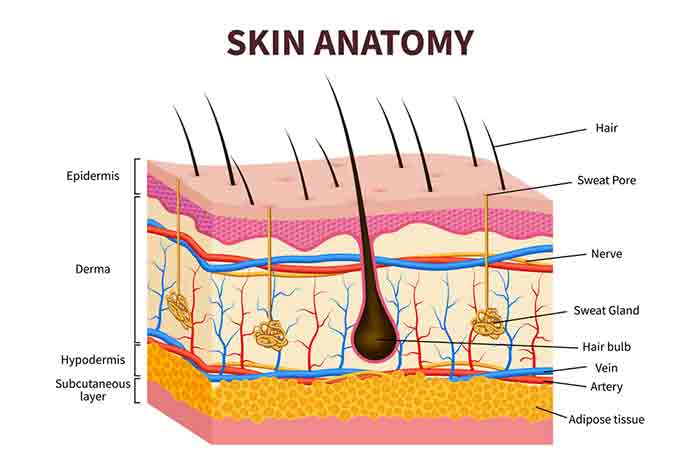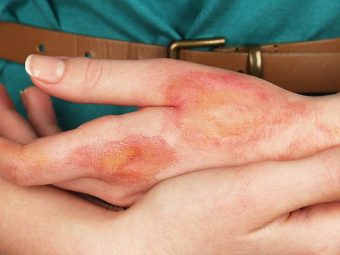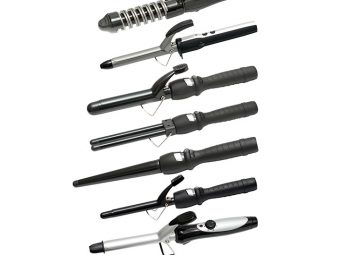Thin And Thick Skin: Know The Differences Here
Learn about the differences between the two to take care of your skin the right way!

Image: iStock
The first layer of defense for your body against environmental aggressors, germs, and diseases is your skin. You have varying levels of thick and thin skin all over your body. The skin has three layers, and it mostly consists of sebaceous glands and hair follicles. The thickness of the layers and their components varies across the body. In this article, we have illustrated the difference between thick and thin skin. Keep reading to learn more!
In This Article
What Is Thin Skin?
Thin skin has a thinner epidermis (top layer)and lacks the stratum lucidum layer. The epidermis has total five layers (1):
- Stratum basale or Stratum germinativum: It is the deepest layer of the epidermis and contains melanocytes (cells that produce melanini XA natural substance produced by the body that helps provide pigmentation to the skin, hair, and eyes. ).
- Stratum spinosum: It has 8-10 cells layers and contains the dendritic cells (a type of immune cells).
- Stratum granulosum: It has 3-5 cell layers and contains the glycolipids that keep the skin cells stuck.
- Stratum lucidum: It contains 2-3 cell layers and is only found in thick skin in the soles and palms.
- Stratum corneum: It is the uppermost skin layer and has 20-30 cell layers made of keratini XA fibrous protein found in the body that helps structure nails, hair, and the outermost layer of the skin. and dead keratinocytes (cells that produce keratin).
 Quick Tip
Quick TipThe skin thickness variation is dependent on the thickness of the layers of the epidermis. Thin skin is found all over the body except the hands, arms, and feet. The eye area, especially the eyelids, has the thinnest skin.
Did You Know? The upper back skin is the thickest (considering the thickness of the dermis) but is considered thin skin as it has a thinner epidermis. |
Now, let’s understand what thick skin is.
What Is Thick Skin?
Unlike thin skin, thick skin has all five epidermis layers and is mainly present in areas that receive the most friction, like the fingertips, palms, and soles. Thick skin is hairless and does not contain sebaceous glands and apocrine sweat glands as it opens in the hair follicle.
This graph from a study published in the Journal of Mechanical Behavior of Biomedical Materials shows the thickness of the skin around the body. The stratum corneum (SC) of the heels increased in thickness with overextension, from 267 m to 316 m (p = 0.02). In both types of postures (relaxed and overextended), the thickness of load-bearing sites (mean 315 m), such as the foot, fingertip, and heel was significantly (p 0.01) higher than the thickness of non-load-bearing sites.
Thickness Of Stratum Corneum
Source: Morphological parametric mapping of 21 skin sites throughout the body using optical coherence tomographyWhile the skin is naturally thicker or thinner on different body parts, various other factors may also cause someone to have thick or thin skin. Let’s understand in the next sections.
Causes Of Thin Skin
- Our skin naturally becomes thinner with age. This happens due to a decrease in elastin and collagen production (2).
- Taking certain medications, particularly steroids, may lead to skin thinning as a side effect.
Causes Of Thick Skin
- Some people may naturally have thicker skin due to genetics.
- Skin conditions like calluses or corns may result in thickened skin on the feet or hands, due to repeated friction or pressure.
- Underlying medical conditions like diabetes may also affect skin thickness (3).
- Skin conditions like psoriasis or eczema may also lead to thickened skin patches (4),(5).
If you’re concerned about the thinning or thickening of your skin, consult a healthcare professional to determine the cause and explore potential treatments.
Here is a brief overview and comparison between the structure of thin and thick skin.
Thick Skin Vs. Thin Skin
| Appearance And Structure | Thick Skin | Thin Skin |
| Dermis (Second layer) | Has a thin dermis. | Has a thick dermis. |
| Dermal Papillae | Has dermal papillae that consist of mesenchymal cells to regulate hair growth. | Has more prominent dermal papillae. |
| Epidermis | Has five layers in the epidermis. | Has only four layers in the epidermis. |
| Sensory Receptors | Has dense sensory receptors. | Has scattered sensory receptors. |
| Sweat Glands | Has only eccrine sweat glands that release water to cool down skin’s surface. | Has both eccrine and apocrine glands (secretes fatty sweat). |
| Hair Follicles | Does not have any hair follicles. | Has hair follicles. |
| Sebaceous Gland | No sebaceous glands. | Contains sebaceous glands. |
| Arrector Pili Muscles | Does not contain arrector pili muscles (that causes goosebumps). | Has arrector pili muscles. |
 Quick Tip
Quick TipApart from these differences, thick and thin skin have different functions.
Thin skin contains:
- Hair follicles connected to different glands and muscles help to regulate body temperature and repair wounds (6).
- Sebaceous glands produce sebum to keep the skin nourished, moisturized, and protected.
- Sweat glands regulate body temperature.
Thick skin:
- Prevents damage to areas that are exposed to maximum friction.
- Has eccrine sweat glands that help regulate body temperature.
Infographic: The Differences Between Thick And Thin Skin
Thick and thin skin have distinct differences that set them apart. The presence of hair follicles, glands, and their functions are all different. Check out the infographic below to relearn the key differences between thick and thin skin.

Illustration: StyleCraze Design Team
Save the high-quality PDF version on your device now.
Download Infographic
In A Nutshell
Our body skin has different thickness levels, depending on the epidermal thickness. The different layers of skin perform various functions to protect us from the outer environment. The deepest layer is made of subcutaneous tissue which gets thicker when excess fat is deposited, leading to weight gain. The outer skin is thick on the palms and feet soles, where the skin is exposed to maximum friction. In contrast, the rest of the body parts have thin skin and contain hair follicles and sebaceous glands. The human skin has a complex structure that comprises cells, nerves, and muscles and the different epidermal and dermal thickness on our body helps maintain different body functions. We hope this article has helped you understand the difference between thin and thick skin and the role they perform.
Frequently Asked Questions
Does skin thicken with age?
No, the outer layer of the skin tends to get thinner with age (7).
Is thick skin genetic?
Yes, thick skin could be seen in certain skin conditions that are a result of genetic mutations (8).
What is the best vitamin for the skin?
Vitamins D, A, C, and E are all essential for developing and maintaining a healthy skin barrier (9).
Is milk good for skin?
Yes, milk is rich in proteins and is known to have antibacterial and antioxidanti XA substance that fights the ill effects of free radicals in the body, thereby protecting the skin from damage and improving its texture. properties that can help heal and restore your natural skin barrier (10).
Key Takeaways
- Thick skin has five epidermis layers and mainly occurs in areas that receive the most friction, like the fingertips, palms, and soles.
Thin skin is present in all body parts except the hands, arms, and feet. It has a thinner top layer and does not have the stratum lucidum layer. - Thick skin is hairless and does not contain sebaceous glands and apocrine sweat glands, whereas thin skin contains hair follicles and eccrine and apocrine sweat glands.
- The skin on the palms and soles is the thickest, and the skin under the eyes is the thinnest.
Unravel the intriguing world of thick and thin skin in this eye-opening video. Click on it to delve into the science behind these contrasting types and understand how they impact our daily lives.
Sources
Articles on StyleCraze are backed by verified information from peer-reviewed and academic research papers, reputed organizations, research institutions, and medical associations to ensure accuracy and relevance. Read our editorial policy to learn more.
- Anatomy Skin (Integument) Epidermis
https://www.ncbi.nlm.nih.gov/books/NBK470464/ - Decreased collagen production in chronologically aged skin: roles of age-dependent alteration in fibroblast function and defective mechanical stimulation
https://pubmed.ncbi.nlm.nih.gov/16723701/ - Skin Manifestations of Diabetes Mellitus
https://www.ncbi.nlm.nih.gov/books/NBK481900/ - Skin thickness in psoriasis
https://pubmed.ncbi.nlm.nih.gov/1458636/ - Eczema
https://www.ncbi.nlm.nih.gov/books/NBK538209/ - Histology Hair and Follicle
https://www.ncbi.nlm.nih.gov/books/NBK532929/ - Characteristics of the Aging Skin – PMC
https://www.ncbi.nlm.nih.gov/pmc/articles/PMC3840548/ - 25 How to be thick-skinned: genetic disorders of skin and nail – PMC
https://www.ncbi.nlm.nih.gov/pmc/articles/PMC1570930/ - Discovering the link between nutrition and skin aging – PMC
https://www.ncbi.nlm.nih.gov/pmc/articles/PMC3583891/#:~:text=Vitamin%20D,25%2Ddihydroxy%20vitamin%20D3%20synthesis - Milk Proteins—Their Biological Activities and Use in Cosmetics and Dermatology – PMC
https://www.ncbi.nlm.nih.gov/pmc/articles/PMC8197926/





























